Lion Dance Chinese New Year London
Chen Brothers Flying Lion Dance London in Trafalgar square for Chinese New Year
Lion dance (simplified Chinese: 舞狮; traditional Chinese: 舞獅; pinyin: wǔshī) is a form of traditional dance in Chinese culture and other Asian countries in which performers mimic a lion's movements in a lion costume to bring good luck and fortune. The lion dance is usually performed during the Chinese New Year and other Chinese traditional, cultural and religious festivals. It may also be performed at important occasions such as business opening events, special celebrations or wedding ceremonies, or may be used to honour special guests by the Chinese communities.
The Chinese lion dance is normally operated by two dancers, one of whom manipulates the head while the other forms the rear end of the lion. It is distinguishable from the dragon dance which is performed by many people who hold the long sinuous body of the dragon on poles. Chinese lion dance fundamental movements can be found in Chinese martial arts, and it is commonly performed to a vigorous drum beat.
There are two main forms of the Chinese lion dance, the Northern Lion dance and the Southern Lion dance. Both forms of Lion Dance are commonly found in China, but around the world especially in South East Asia, the Southern Lion dance predominates as it was spread by the Chinese diaspora communities who are historically mostly of Southern Chinese origin. Versions of lion dance related to the Chinese lion dance are also found in Japan, Korea, Tibet and Vietnam. Other forms of lion dance exist around the world, for example Singa Barong in Indonesian culture.
There has been an old tradition in China of dancers wearing masks to resemble animals or mythical beasts since antiquity, and performances described in ancient texts such as Shujing where wild beasts and phoenix danced may have been masked dances.
👉If you like, follow me❤️:
📷Instagram: https://www.instagram.com/erolugilde/
🎥Youtube: https://youtube.com/channel/UCmHDF0jU6oIypzwIXAfZXkA?sub_confirmation=1
Gear used GoPro Hero 8: https://amzn.to/3w4YuSJ
In Qin Dynasty sources, dancers performing exorcism rituals were described as wearing bearskin mask, and it was also mentioned in Han Dynasty texts that "mime people" (象人) performed as fish, dragons, and phoenixes. However, lion is not native to China (a species found in Northeast China Panthera youngi had long become extinct), and the Lion Dance therefore has been suggested to have originated outside of China from countries such as India or Persia, and introduced via Central Asia. According to ethnomusicologist Laurence Picken, the Chinese word for lion itself, shi (獅, written as 師 in the early periods), may have been derived from the Persian word šer. The earliest use of the word shizi meaning lion first appeared in Han Dynasty texts and had strong association with Central Asia (an even earlier but obsolete term for lion was suanni (狻麑 or 狻猊), and lions were presented to the Han court by emissaries from Central Asia and the Parthian Empire. Detailed descriptions of Lion Dance appeared during the Tang Dynasty and it was already recognized by writers and poets then as a foreign dance, however, Lion dance may have been recorded in China as early as the third century AD where "lion acts" were referred to by a Three Kingdoms scholar Meng Kang (孟康) in a commentary on Hanshu. In the early periods it had association with Buddhism: it was recorded in a Northern Wei text, Description of Buddhist Temples in Luoyang (洛陽伽藍記), that a parade for a statue of Buddha of a temple was led by a lion to drive away evil spirits. An alternative suggestion is therefore that the dance may have developed from a local tradition that appropriated the Buddhist symbolism of lion.
There were different versions of the dance in the Tang Dynasty. In the Tang court, the lion dance was called the Great Peace Music (太平樂, Taiping yue) or the Lion Dance of the Five Directions (五方師子舞).
Chinese New Year (traditional Chinese: 農曆新年, 中國新年; simplified Chinese: 农历新年, 中国新年; pinyin: nónglì xīn nián, zhōngguó xīn nián) is the Chinese festival that celebrates the beginning of a new year on the traditional Chinese calendar. The festival is commonly referred to as the Spring Festival (traditional Chinese: 春節; simplified Chinese: 春节; pinyin: Chūn Jié) in China as the spring season in the lunisolar calendar traditionally starts with lichun, the first of the twenty-four solar terms which the festival celebrates around the time of. Marking the end of winter and the beginning of the spring season, observances traditionally take place from New Year’s Eve, the evening preceding the first day of the year to the Lantern Festival, held on the 15th day of the year. The first day of Chinese New Year begins on the new moon that appears between 21 January and 20 February. In 2021, the first day of the Chinese New Year will be on Friday, 12 February,
#chinesenewyear #liondance #chenbrothers
Видео Lion Dance Chinese New Year London автора Мантра для удачи и успеха в инвестировании
Видео Lion Dance Chinese New Year London автора Мантра для удачи и успеха в инвестировании
Информация
9 апреля 2024 г. 6:23:35
00:08:23
Похожие видео
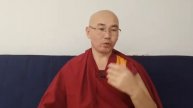 Разъяснение ежедневных практик. Часть 1/2 (18.11.2021)
Разъяснение ежедневных практик. Часть 1/2 (18.11.2021) Мурали Мохан Махарадж - «Он озаряет весь мир» лекция ШБ 5.7.14
Мурали Мохан Махарадж - «Он озаряет весь мир» лекция ШБ 5.7.14 1000063054.mp4
1000063054.mp4 Высота, от которой начался путь на Берлин.
Высота, от которой начался путь на Берлин.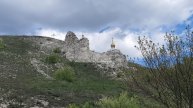 Свято-Успенский Дивногорский мужской монастырь. Малые Дивы. Воронежская область
Свято-Успенский Дивногорский мужской монастырь. Малые Дивы. Воронежская область Daily motivation episode 23 #motivation
Daily motivation episode 23 #motivation Ленские столбы тур
Ленские столбы тур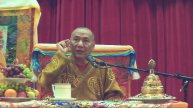 Трансляция лекции Досточтимого Геше Джампа Тинлея (Ершово, 13/2 апреля 2019)
Трансляция лекции Досточтимого Геше Джампа Тинлея (Ершово, 13/2 апреля 2019) 别抱怨,永遠不要和別人比生活,追求不同各有活法。開心了就笑,累了就睡覺,日子圖的就是安穩和踏實! #佛語禪心
别抱怨,永遠不要和別人比生活,追求不同各有活法。開心了就笑,累了就睡覺,日子圖的就是安穩和踏實! #佛語禪心 Встреча в Одессе с Феликсом. Адвайта 15.06.2016 ч2
Встреча в Одессе с Феликсом. Адвайта 15.06.2016 ч2 Можно вечно смотреть на огонь. Согревает и опустошает голову от всех мыслей.
Можно вечно смотреть на огонь. Согревает и опустошает голову от всех мыслей. Паринирвана
Паринирвана Только представьте...домик в горах у речки, да еще и с банным чаном. Адыгея. Каменномостский
Только представьте...домик в горах у речки, да еще и с банным чаном. Адыгея. Каменномостский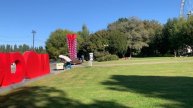 Первомайская_50
Первомайская_50 Что там на Бали? День 5 - идеальные пляжи и закат в храме Улувату
Что там на Бали? День 5 - идеальные пляжи и закат в храме Улувату 🔥Жаркий выпуск уже на канале
🔥Жаркий выпуск уже на канале The Doors. "When The Music's Over"
The Doors. "When The Music's Over"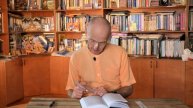 Варнашрама Дхарма. 7 часть. Кришнананда дас
Варнашрама Дхарма. 7 часть. Кришнананда дас Матрица культурной обусловленности | часть 1 | Четвёртый Путь
Матрица культурной обусловленности | часть 1 | Четвёртый Путь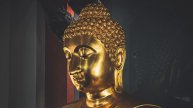 Chant of the Ten Perfections (Parami)
Chant of the Ten Perfections (Parami)
